In this article we will dive into the qualifications module in Huma and show you how to get the most out of it. Here is what we touch on:
The Competence Database is an important step in the right direction
What competence can I get an overview of in Huma?
How can I quickly get an overview of employees' different competences?
How do I know if a certification has expired or is about to expire?
What about course certificates, diplomas, and other documents that may be useful to keep track of?
Can everyone update their own competences?
How do I know what level to set?
Who can see the levels?
48% of all employees do not feel that they are developing!
Competence development will be an important topic in Huma going forward. The reason for this is simple. 90% of employees will stay longer in the company if the company invests in their development. And 61% of employees who grow, develop and change positions internally in the company perform better compared to those who are hired externally and do not know the company beforehand.
And here is a list of the top 5 factors that drive a good work culture.
- Opportunities to learn and grow*
- Belonging
- Organizational values
- Support for well-being
- Collaboration
* Previously ranked #9 in 2019 — a significant change in only three years
The Competence Database is an important step in the right direction
In order to work with competence development, one must first know where they are today and what competence is available. Competence development is about setting goals and KPIs, getting feedback and improving.
"What do we want in the long term? What competence do we need to meet the challenges ahead?"
A mapping of competence will help you get an overview of what you have today. Only when you have a solid overview of the competence, can you lift your eyes and start looking at the development.
There will be more tools for developing employees - but start today by building a database of competence.
What competence can I get an overview of in Huma?
In short, Huma currently has 5 different categories of competence.
- Skills
such as communication, teamwork, and creativity - Language
such as english, norwegian, swedish and german - Certifications
such as courses and certificates - Education
such as bachelor's and master's degrees - Experience
such as previous projects or other work experience
Each category contains an unlimited number of types of competence.
It is up to you to determine which type of competence you want to keep track of.
Competence can be assigned to a person and then that competence will appear under the person's profile and under the teams or locations the person belongs to. In addition, competence will also be listed under "All Competence".
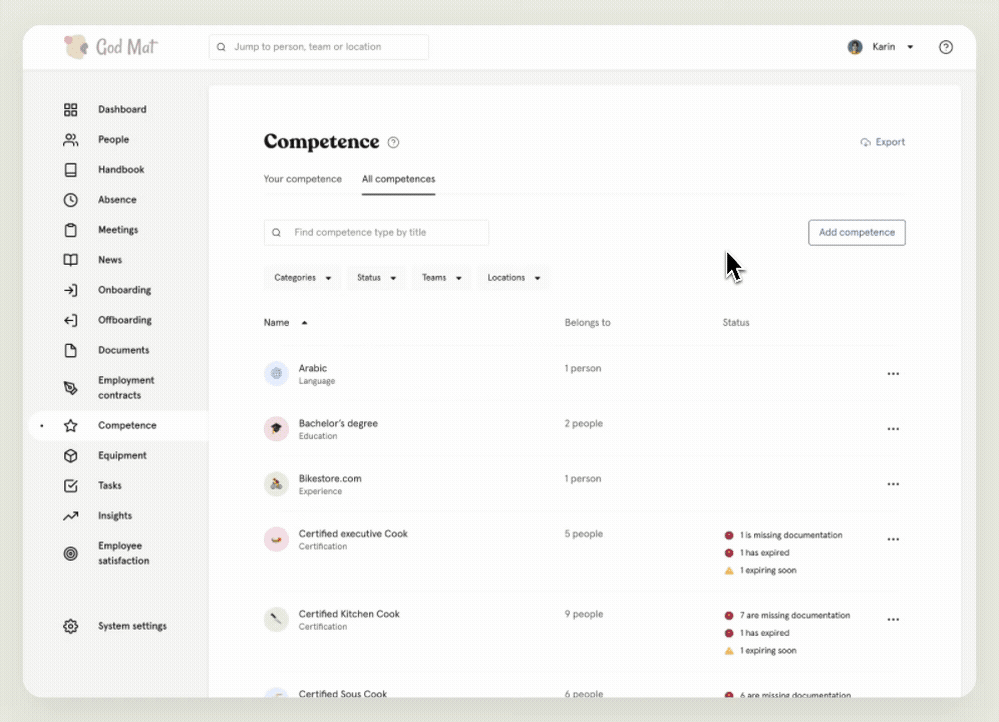
How can I quickly get an overview of employees' different competences?
You get a complete overview in "All Competences". You can also go to a colleague's profile, a team, or a location to see a pre-filtered list of related competence.
How do I know if a certification has expired or is about to expire?
You will see statuses in listings and detailed views that tell you whether something needs to be updated or changed. Alerts - push, email, and possibly Slack - will be sent out well in advance before a certificate expires - both to the manager and to the person to whom the certificate belongs.
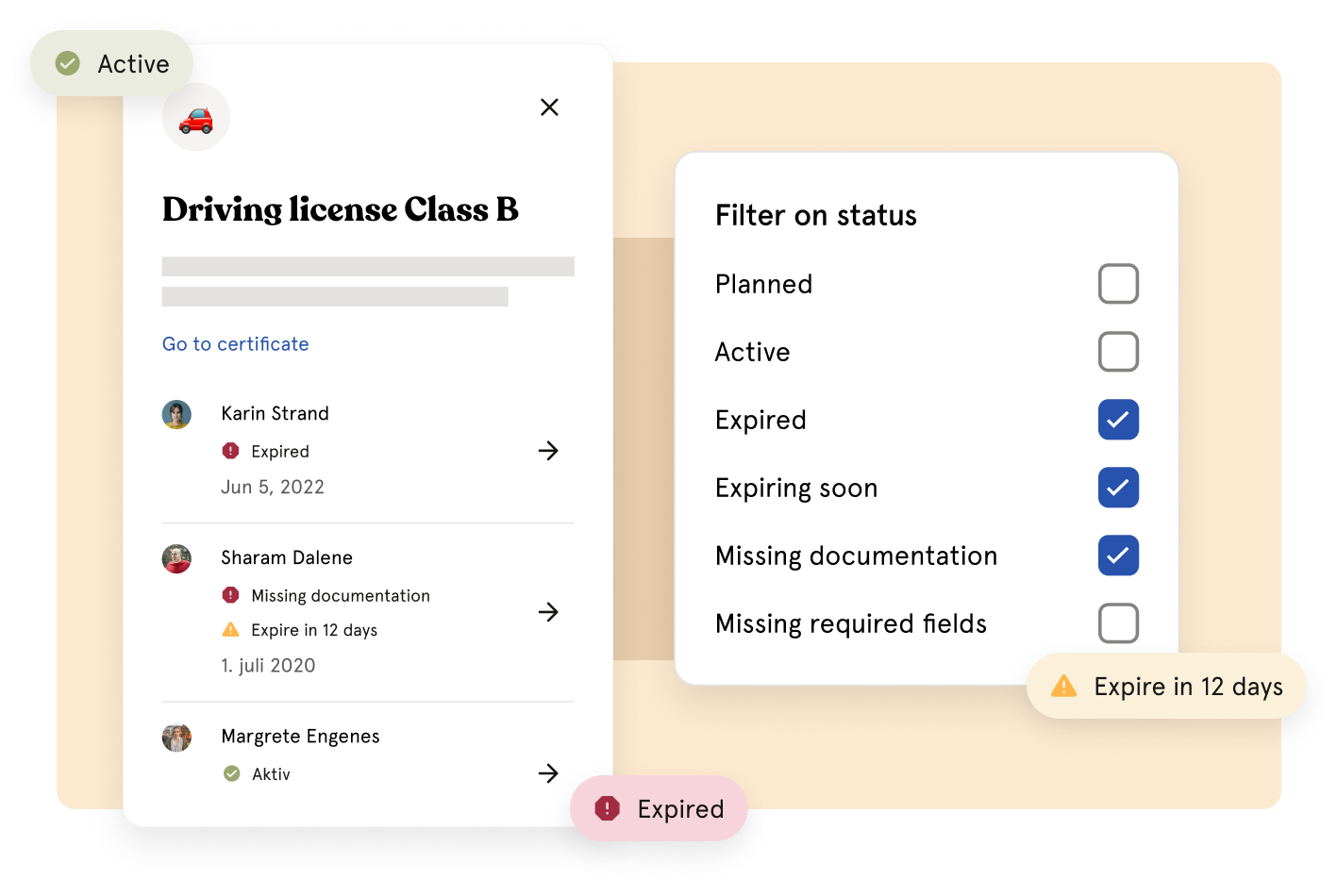
What about course certificates, diplomas, and other documents that may be useful to keep track of?
You can easily add links and upload documentation for each competence in Huma. Employees can see all details about their own competences, including files and links. Administrators with competence access can also upload and open the documentation.
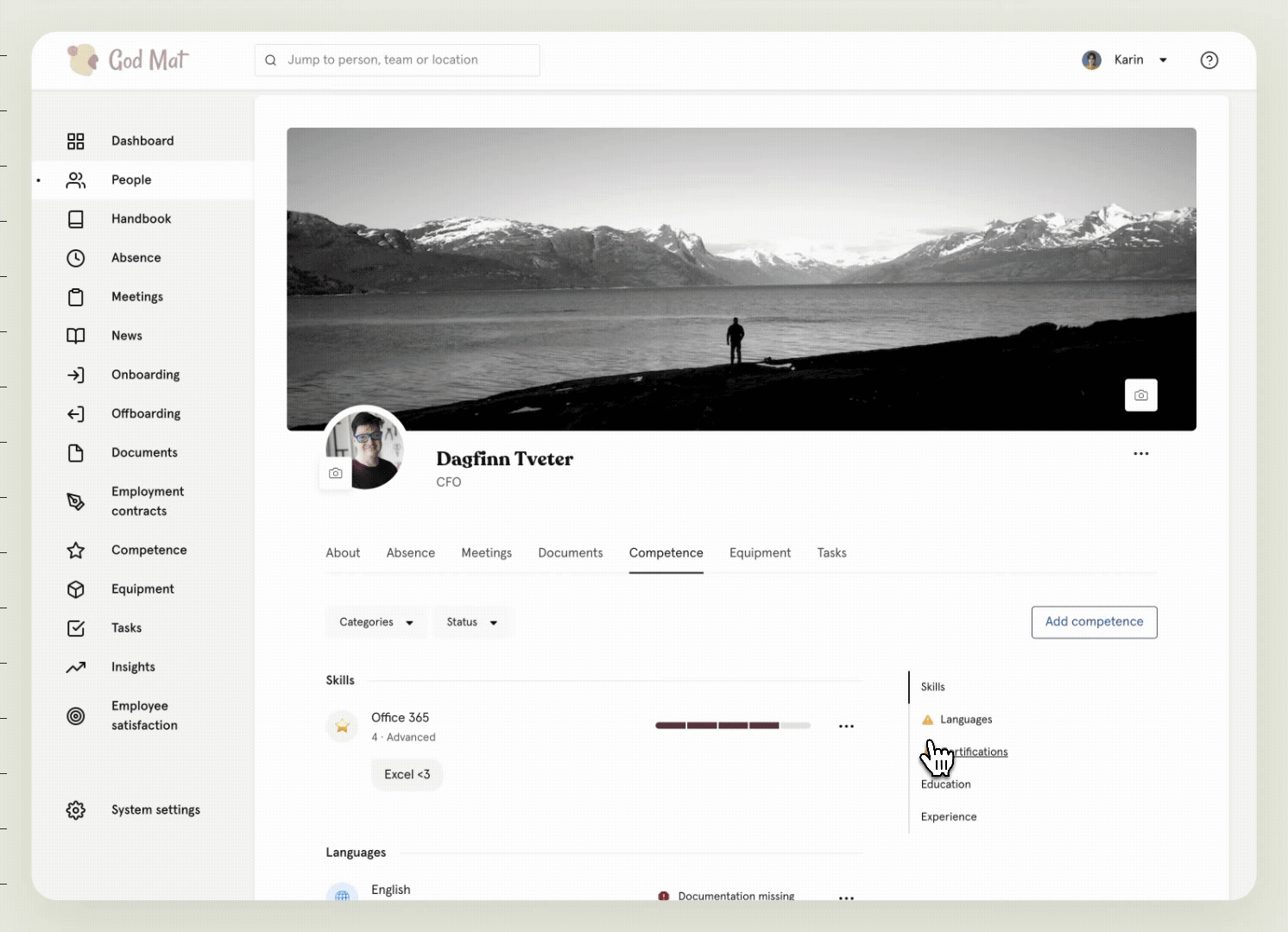
Can everyone update their own competences?
Only people with competence access can register, update, and delete types and competences.
How do I know what level to set?
For languages and skills that are entered - you have the option to choose a level that represents the degree of competence - from novice to expert.
The levels for languages are based on the European standard for measuring language proficiency - CEFR Common European Framework Reference. The scale has the following levels: A1, A2, B1, B2, C1, and C2. The definition of the levels are included in Huma and is easily accessible.
For skills, there are defined five different levels with a description for each level - so it's really just a matter of choosing the level that best fits.
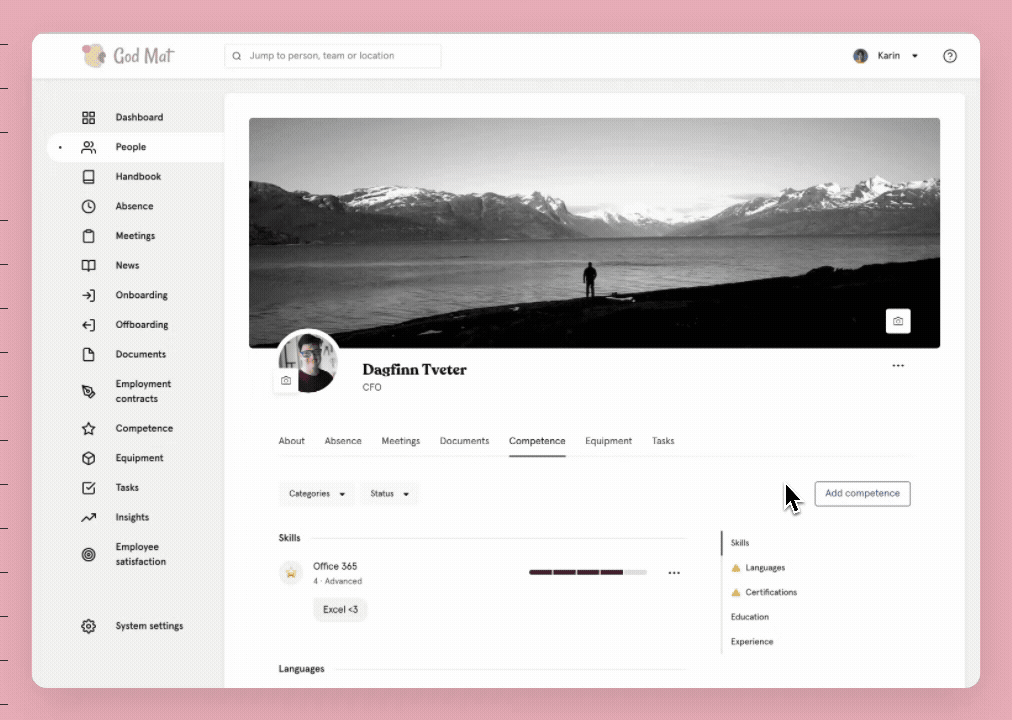
Who can see the levels? 🙈
The levels will only be visible for the competence it belongs to and the administrator.
--
Competence development is an important field going forward. Please let us know how Huma can help you develop your employees!
Sources:
State of people strategy report in 2020
Linkedin Workplace Learning Report 2022
TLNT and Wall Street Journal


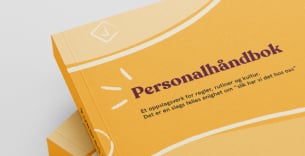




.jpg?width=800&name=no_blogg_phb_oppdatering_25_des_var3%20(1).jpg)